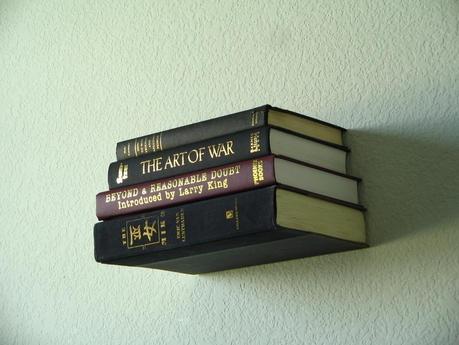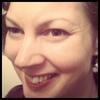
(*Portrait coming soon)
I am often asked how I came to be able to write so well. I always find it hard to explain, because I know it’s not necessarily a skill that comes easily to pre-lingually or early-onset deaf people. In the first instance, they have to work harder to get to grips with a language that is simply not as accessible to them as BSL. For many of them the secret lies in the quality – and sensitivity – of their education.
In general education as I understand it, English is taught orally as well as in written form. Schoolchildren often learn to make sense of what they’re reading through what they’re picking up aurally. Not for nothing do they get asked to read aloud in class.
At 16 months old, I’d learnt to string together about five words, but I wasn’t old enough to understand what I was saying. (This is significant. Language only really comes together once child makes sense of and attaches cultural meaning to the words s/he’s saying, signed or spoken.) Then I became deaf from meningitis – and didn’t speak again until I was five.
I was lucky. I grew up in the ’70s and ’80s, when sign language was banned from deaf education, so my relatively early acquisition of speech was deemed miraculous. (Research suggests that if children have not acquired language by age six, they never will.) Held up as an example to oralism, I was sent to the then Lady Spencer-Churchill College near Oxford, where I was interviewed on film for Teacher of the Deaf (TOD) trainees to study. As it turned out, this was not enough for me.
From age four to 11, I attended a partially hearing unit (PHU – today’s equivalent would be the Hearing Impaired Unit) where I’d study the core subjects, English and Maths, and join the mainstream school for Art, Crafts, and PE. I had no Deaf identity, despite spending seven years with other deaf children. I enjoyed communicating with them using what would probably appear to be the bare bones of BSL today, but due to the lack of signing deaf role models, I thought – misguidedly – that it wouldn’t go anywhere.
I was bored in the PHU. Local state deaf education was poorly funded, oralist of course in approach, and of a low standard (I don’t think the council had good expectations of deaf people) so I sat in just the one room with children whose ages ranged from four to 11.
I didn’t socialise very much with my mainstream peers either. Most of the time I attracted interest by wowing them with my emerging creativity in Art classes. In the playground I had just one hearing friend who was kind and inclusive enough to try and involve me in other children’s games. I never knew her name. Maybe the fine strands of fair hair swishing around her plait in the wind distracted me when she gave it to me.
The PHU children were given educational textbooks in reading, writing and spelling at different levels according to age and ability, the most advanced being level seven. By age nine or 10, I’d already gone through level seven three times. The TODs didn’t know what to do with me.
On days when I had absolutely nothing to do – which was often – I’d potter into the PHU’s storeroom, where they kept a huge variety of art materials as well as toys. There I’d pore through back issues of Vogue and mail-order catalogues kept for photo-collages.
My father encouraged me to keep holiday scrapbooks. He’d stick in postcards, pieces of maps, family snaps and so on, and get me to either fill in the gaps or copy the words. By age 11 I was into Anne of Green Gables - the entire series. In secondary education I loved Shakespeare (don’t get me started on Macbeth), and by the third form - Year 9 today – I was producing hand-illustrated short stories, fashion catalogues and comics. My teachers would hand me lined textbooks with blank inserts for illustrations because they liked my stories and how I presented them.
I was always reading. At home I’d help with chores like the drying-up of dishes, then once I chanced upon a book lying around in the room – forget the chore. It didn’t matter what it was; if I saw a book, I’d read it. My mother gave up on ballet classes because I chose to read rather than do the five positions.
As a teenager, English and Art were my strongest subjects – significantly so, given that these are the two most powerful tools for creative self-expression. Even though by this point I was attending a deaf boarding school, I was still lacking a Deaf identity. If a TOD believed they’d caught a pupil signing, they’d give us a black mark. They had lists of pupils’ names pinned up in the staffroom for that purpose – and those with the most black marks got detention at the end of term. I can never forget the wooden desks grouped together in the staffroom corridor where pupils did their lines.
I never joined them, but on the rare occasions when I got ‘caught’, I couldn’t understand why. Teachers would base their judgment on stuff like pointing, which everyone did anyway.
Unbeknown to the school, I’d already learnt the fingerspelling alphabet from a form-mate in a loo cubicle three weeks into my first term. It felt as surreptitious as smoking.
Unbeknown to me, I needed it. My hearing levels had dropped unexpectedly just before I began secondary school – and in my first year, I was labelled a daydreamer by my form teacher because I couldn’t understand what she was saying.
The older I got, the more I got into my writing. It is amazing what human beings will do to compensate for opportunities they feel they have been denied. I may have been born into an extended family of seven writers and five artists, but it didn’t help that I experienced communication barriers with most of them. Instead, I looked to my father’s scrapbooks, and then my books, for my learning.
Little did I know – until 2003, when I began working with a deaf television crew and, joy of joys, a sign language interpreter (SLI) – how inadequate the written word was as a substitute for verbal communication. No matter how skilled and nuanced I became, in order to impart tone and mood accurately I needed to be able to rely on face-to-face contact. Nothing quite puts the meaning across like facial expression, gesture, positioning, good lighting, and body language – and that’s before I get to the actual words being conveyed.
Others may criticize me on my imperfect BSL. I agree; it could be better, but ultimately, I don’t really care. Far more important is the fact that I have access to both sign language and English, and my own ability to adjust my communication means according to the company I keep. For me to be able to engage in a two-way dialog where my fellow communicator and I don’t just understand each other – but value the insights gained from one another – is enough.
I consider myself very, very lucky to have become a proficient writer, and to be able to continue the practice with this blog. But in my heart of hearts, I also know how much I still stand to gain from the eloquent free-flow of sign language today.
51.807220 -0.812766
